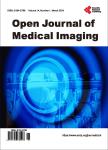Intracranial Hemorrhage in Newborn with TAR Syndrome—A Feared Complication
Intracranial Hemorrhage in Newborn with TAR Syndrome—A Feared Complication作者机构:Department of Radiology Heliopolis Hospital Sã o Paulo Brazil Hospital Regional de Cotia Sã o Paulo Brazil
出 版 物:《Open Journal of Medical Imaging》 (医学影像期刊(英文))
年 卷 期:2020年第10卷第2期
页 面:105-109页
主 题:TAR Syndrome Intracranial Hemorrhage Neonatology Transfontanellar Ul-trasound CT
摘 要:The thrombocytopenia-absent radius (TAR) syndrome is an autosomal recessive disease characterized by bilateral absence of radius with the presence of both thumbs and thrombocytopenia, many times associated with cardiac anomalies, intolerance or allergy to cow’s milk and phocomelia. Imaging study is important for the correct diagnosis at birth and documentation of one of the diagnosis criteria (absence of radius) in prenatal care. The main hematologic symptoms and the most feared of them, intracranial bleeding, occurs when platelets levels are below 10,000/mm3, which is more common during the first months. Therefore, imaging study is crucial to quickly identify complications and correctly manage the case. In this case report, the patient had upper limps alterations at birth and at first week presented seizures, with transfontanellar ultrasound and head computed tomography without contrast demonstrating intracranial hemorrhage. Laboratory results and imaging review were able to diagnose TAR syndrome. The patient was treated with platelets transfusion and thrombocytopenia was solved. She is currently under specialized medical care, with no neurological deficits and showing satisfactory development.



